Test Bank Pharmacotherapeutics for Advanced Practice 3rd Edition, Arcangelo, Peterson
$38.00
Test Bank Pharmacotherapeutics for Advanced Practice 3rd Edition, Arcangelo, Peterson
- Description
- Reviews (0)
Description
You will receive this product immediate after placing the order
Success in nursing school is truly a journey. Spend less time learning worthless information and more time memorizing what you need to know. Our nursing test banks for sale are proven to generate results, regardless of your education level or any previous failures you may have experienced. Add this product to your cart and checkout to download this Test Bank Pharmacotherapeutics for Advanced Practice 3rd Edition, Arcangelo, Peterson.
*** BELOW, IS A SAMPLE FROM THIS NURSING TEST BANK, YOU WILL RECEIVE THE CHAPTERS VIA PDF OR WORD DOCUMENT ***
Chapter 2.Pharmacokinetic Basis of Therapeutics and Pharmacodynamic
MULTIPLE CHOICE
1. A patient’s nutritional intake and lab work reflects hypoalbuminemia. This is critical to prescribing because:
A. Distribution of drugs to target tissue may be affected
B. The solubility of the drug will not match the site of absorption
C. There will be less free drug available to generate an effect
D. Drugs bound to albumin are readily excreted by the kidney
ANS: A PTS: 1
2. Drugs that have a significant first-pass effect:
A. Must be given by the enteral (oral) route only
B. Bypass the hepatic circulation
C. Are rapidly metabolized by the liver and may have little if any desired action
D. Are converted by the liver to more active and fat-soluble forms
ANS: C PTS: 1
3. The route of excretion of a volatile drug will likely be:
A. The kidneys
B. The lungs
C. The bile and feces
D. The skin
ANS: B PTS: 1
4. Medroxyprogesterone (Depo Provera) is prescribed IM to create a storage reservoir of the drug. Storage reservoirs:
A. Assure that the drug will reach its intended target tissue
B. Are the reason for giving loading doses
C. Increase the length of time a drug is available and active
D. Are most common in collagen tissues
ANS: C PTS: 1
5. The NP chooses to give cephalexin every 8 hours based on knowledge of the drug’s:
A. Propensity to go to the target receptor
B. Biological half-life
C. Pharmacodynamics
D. Safety and side effects
ANS: B PTS: 1
6. Azithromycin dosing requires the first day’s dose be twice those of the other 4 days of the prescription. This is considered a loading dose. A loading dose:
A. Rapidly achieves drug levels in the therapeutic range
B. Requires four to five half-lives to attain
C. Is influenced by renal function
D. Is directly related to the drug circulating to the target tissues
ANS: A PTS: 1
7. The point in time on the drug concentration curve that indicates the first sign of a therapeutic effect is the:
A. Minimum adverse effect level
B. Peak of action
C. Onset of action
D. Therapeutic range
ANS: C PTS: 1
8. Phenytoin requires a trough level be drawn. Peak and trough levels are done:
A. When the drug has a wide therapeutic range
B. When the drug will be administered for a short time only
C. When there is a high correlation between the dose and saturation of receptor sites
D. To determine if a drug is in the therapeutic range
ANS: D PTS: 1
9. A laboratory result indicates the peak level for a drug is above the minimum toxic concentration. This means that the:
A. Concentration will produce therapeutic effects
B. Concentration will produce an adverse response
C. Time between doses must be shortened
D. Duration of action of the drug is too long
ANS: B PTS: 1
10. Drugs that are receptor agonists may demonstrate what property?
A. Irreversible binding to the drug receptor site
B. Up-regulation with chronic use
C. Desensitization or down-regulation with continuous use
D. Inverse relationship between drug concentration and drug action
ANS: C PTS: 1
11. Drugs that are receptor antagonists, such as beta blockers, may cause:
A. Down-regulation of the drug receptor
B. An exaggerated response if abruptly discontinued
C. Partial blockade of the effects of agonist drugs
D. An exaggerated response to competitive drug agonists
ANS: B PTS: 1
12. Factors that affect gastric drug absorption include:
A. Liver enzyme activity
B. Protein-binding properties of the drug molecule
C. Lipid solubility of the drug
D. Ability to chew and swallow
ANS: C PTS: 1
13. Drugs administered via intravenous (IV) route:
A. Need to be lipid soluble in order to be easily absorbed
B. Begin distribution into the body immediately
C. Are easily absorbed if they are nonionized
D. May use pinocytosis to be absorbed
ANS: B PTS: 1
14. When a medication is added to a regimen for a synergistic effect, the combined effect of the drugs is:
A. The sum of the effects of each drug individually
B. Greater than the sum of the effects of each drug individually
C. Less than the effect of each drug individually
D. Not predictable, as it varies with each individual
ANS: B PTS: 1
15. Which of the following statements about bioavailability is true?
A. Bioavailability issues are especially important for drugs with narrow therapeutic ranges or sustained release mechanisms.
B. All brands of a drug have the same bioavailability.
C. Drugs that are administered more than once a day have greater bioavailability than drugs given once daily.
D. Combining an active drug with an inert substance does not affect bioavailability.
ANS: A PTS: 1
16. Which of the following statements about the major distribution barriers (blood-brain or fetal-placental) is true?
A. Water soluble and ionized drugs cross these barriers rapidly.
B. The blood-brain barrier slows the entry of many drugs into and from brain cells.
C. The fetal-placental barrier protects the fetus from drugs taken by the mother.
D. Lipid soluble drugs do not pass these barriers and are safe for pregnant women.
ANS: B PTS: 1
17. Drugs are metabolized mainly by the liver via Phase I or Phase II reactions. The purpose of both of these types of reactions is to:
A. Inactivate prodrugs before they can be activated by target tissues
B. Change the drugs so they can cross plasma membranes
C. Change drug molecules to a form that an excretory organ can excrete
D. Make these drugs more ionized and polar to facilitate excretion
ANS: C PTS: 1
18. Once they have been metabolized by the liver, the metabolites may be:
A. More active than the parent drug
B. Less active than the parent drug
C. Totally “deactivated” so that they are excreted without any effect
D. All of the above
ANS: D PTS: 1
19. All drugs continue to act in the body until they are changed or excreted. The ability of the body to excrete drugs via the renal system would be increased by:
A. Reduced circulation and perfusion of the kidney
B. Chronic renal disease
C. Competition for a transport site by another drug
D. Unbinding a nonvolatile drug from plasma proteins
ANS: D PTS: 1
20. Steady state is:
A. The point on the drug concentration curve when absorption exceeds excretion
B. When the amount of drug in the body remains constant
C. When the amount of drug in the body stays below the MTC
D. All of the above
ANS: B PTS: 1
21. Two different pain meds are given together for pain relief. The drug-drug interaction is:
A. Synergistic
B. Antagonistic
C. Potentiative
D. Additive
ANS: D PTS: 1
22. Actions taken to reduce drug-drug interaction problems include all of the following EXCEPT:
A. Reducing the dose of one of the drugs
B. Scheduling their administration at different times
C. Prescribing a third drug to counteract the adverse reaction of the combination
D. Reducing the dosage of both drugs
ANS: C PTS: 1
23. Phase I oxidative-reductive processes of drug metabolism require certain nutritional elements. Which of the following would reduce or inhibit this process?
A. Protein malnutrition
B. Iron deficiency anemia
C. Both A and B
D. Neither A nor B
ANS: D PTS: 1
24. The time required for the amount of drug in the body to decrease by 50% is called:
A. Steady state
B. Half-life
C. Phase II metabolism
D. Reduced bioavailability time
ANS: B PTS: 1
25. An agonist activates a receptor and stimulates a response. When given frequently over time the body may:
A. Up-regulate the total number of receptors
B. Block the receptor with a partial agonist
C. Alter the drug’s metabolism
D. Down-regulate the numbers of that specific receptor
ANS: D PTS: 1
26. Drug antagonism is best defined as an effect of a drug that:
A. Leads to major physiologic psychological dependence
B. Is modified by the concurrent administration of another drug
C. Cannot be metabolized before another dose is administered
D. Leads to a decreased physiologic response when combined with another drug
ANS: B PTS: 1
27. Instructions to a client regarding self-administration of oral enteric-coated tablets should include which of the following statements?
A. “Avoid any other oral medicines while taking this drug.”
B. “If swallowing this tablet is difficult, dissolve it in 3 ounces of orange juice.”
C. “The tablet may be crushed if you have any difficultly taking it.”
D. “To achieve best effect, take the tablet with at least 8 ounces of fluid.”
ANS: D PTS: 1
28. The major reason for not crushing a sustained release capsule is that, if crushed, the coated beads of the drugs could possibly result in:
A. Disintegration
B. Toxicity
C. Malabsorption
D. Deterioration
ANS: B PTS: 1
29. Which of the following substances is the most likely to be absorbed in the intestines rather than in the stomach?
A. Sodium bicarbonate
B. Ascorbic acid
C. Salicylic acid
D. Glucose
ANS: A PTS: 1
30. Which of the following variables is a factor in drug absorption?
A. The smaller the surface area for absorption, the more rapidly the drug is absorbed.
B. A rich blood supply to the area of absorption leads to better absorption.
C. The less soluble the drug, the more easily it is absorbed.
D. Ionized drugs are easily absorbed across the cell membrane.
ANS: B PTS: 1
31. An advantage of prescribing a sublingual medication is that the medication is:
A. Absorbed rapidly
B. Excreted rapidly
C. Metabolized minimally
D. Distributed equally
ANS: A PTS: 1
32. Drugs that use CYP 3A4 isoenzymes for metabolism may:
A. Induce the metabolism of another drug
B. Inhibit the metabolism of another drug
C. Both A and B
D. Neither A nor B
ANS: C PTS: 1
33. Therapeutic drug levels are drawn when a drug reaches steady state. Drugs reach steady state:
A. After the second dose
B. After four to five half-lives
C. When the patient feels the full effect of the drug
D. One hour after IV administration
ANS: B PTS: 1
34. Up-regulation or hypersensitization may lead to:
A. Increased response to a drug
B. Decreased response to a drug
C. An exaggerated response if the drug is withdrawn
D. Refractoriness or complete lack of response
ANS: C PTS: 1
Do you have any questions? Would you like a sample sent to you? Just send us an email at inquiry@testbanksafe.com (no spaces). We will respond as soon as possible.
Be the first to review “Test Bank Pharmacotherapeutics for Advanced Practice 3rd Edition, Arcangelo, Peterson”
You must be logged in to post a review.

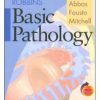

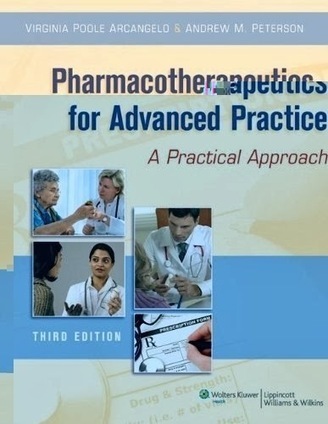
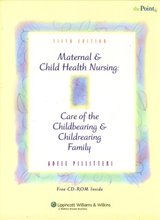
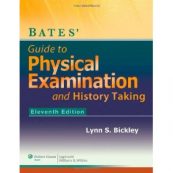

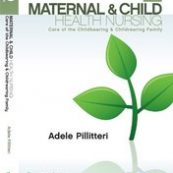
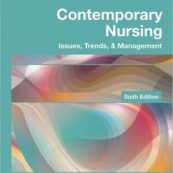
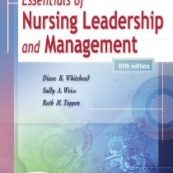
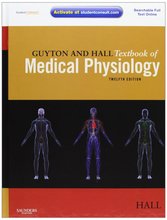
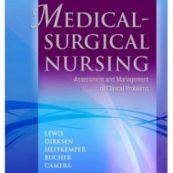
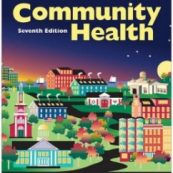
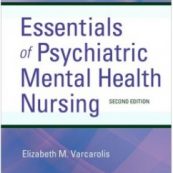
Reviews
There are no reviews yet.